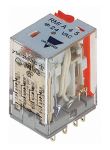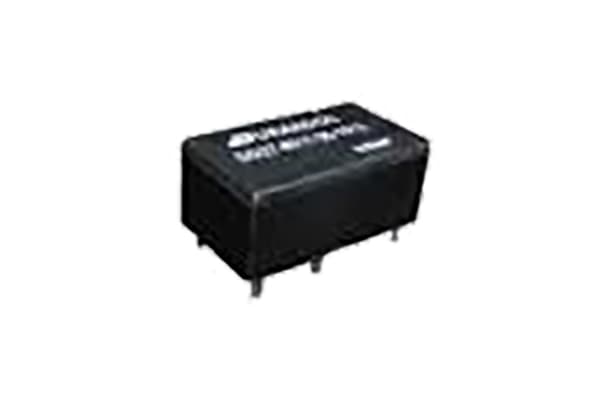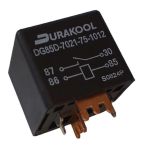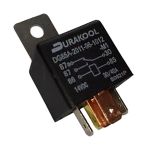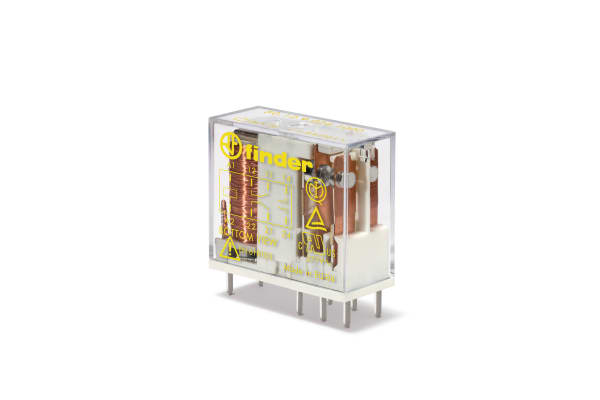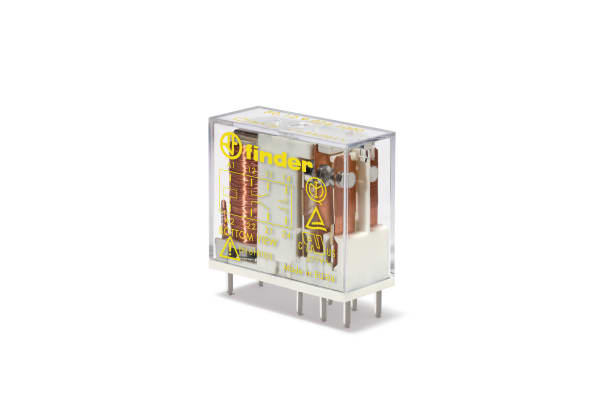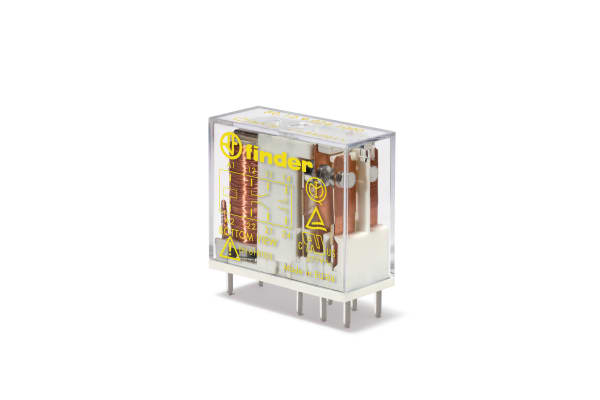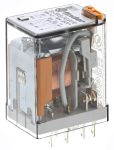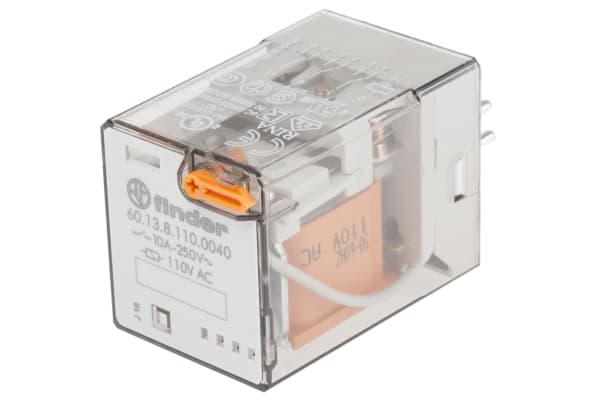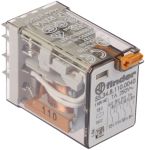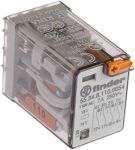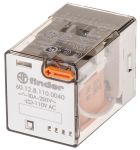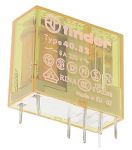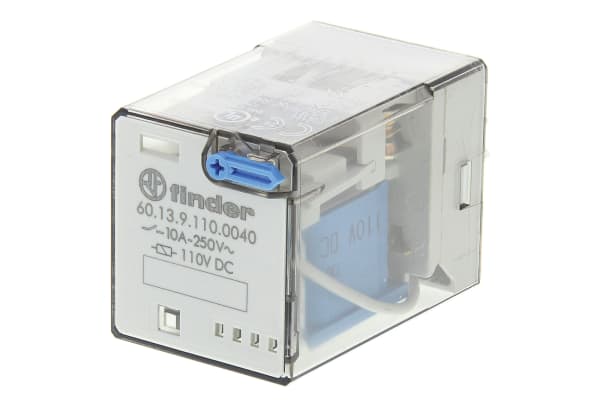Non-Latching Relays
Relays are electrical switches that are operated by electrical impulses with the primary function to open and close a circuit, they can also be referred to as industrial switches. There are 2 main types available, latching and non–latching relays.How do non-latching relays work?Non-latching relays are in a normally closed (NC) position and will stay in this state without power. When power passes through the circuit, the relay switched to a normally open (NO) position by using an internal coil to generate a magnetic force, holding this NO position. Once the current is turned off, it returns to the NC position. This makes non-latching relays well suited to push-button applications like keyboards and micro-controller input buttons.What are non-latching relays used for?Non-latching relays are highly durable and versatile components, making their performance long lasting and suitable for use in a wide range of applications, such as:Automotive enginesHousehold appliancesIndustrial machineryMedical equipmentTelecommunications equipmentWhat is the difference between latching and non-latching relays?Both types of relays in similar in design and function, however, a significant difference between them is that a latching relay will remain in the last position it when it was last powered, whereas a non-latching goes back to its normal position. This makes each more type of relay suitable for different applications. Considerations when selecting a relayWhen choosing a relay, it is important to consider a number of specifications to ensure it is fit for purpose, some factors include:Coil voltage – the required voltage to actuate the switching mechanism. If a voltage is too high this could damage the components, if it is too low then it will not actuate. Contact configuration – This is the state the contacts are in without power. For example SPST, single pole single throw.Contact material – the relay contacts are available in many materials that have certain properties. Common materials are gold, silver, tin oxide and nickel Coil power – the amount of power (watts) the coil operates at. This must match the power in the circuit for correct function. Coil resistance – the amount of resistance (ohms) in the circuit that the coil creates.
-
4PDT PLUG-IN RELAY,5A 110/120VAC COIL
IDR172,229.38 -
Carlo Gavazzi, 230V ac Coil Non-Latching Relay 4PDT, 5A Switching Current Plug In, 4 Pole, RMIA45230AC
IDR175,900.53 -
Carlo Gavazzi, 24V ac Coil Non-Latching Relay 4PDT, 5A Switching Current Plug In, 4 Pole, RMIA45024AC
IDR116,008.34 -
Carlo Gavazzi, 24V dc Coil Non-Latching Octal Relay DPDT, 10A Switching Current Plug In, 2 Pole, RCP800224VDC
IDR211,038.68 -
Durakool, 12V dc Coil Non-Latching Relay SPDT Plug In Single Pole, DG56A-7011-76-1012-DR
IDR44,158.69 -
Durakool, 12V dc Coil Non-Latching Relay SPDT Plug In Single Pole, DG85C-7011-76-1012-DR
IDR68,493.17 -
Durakool, 12V dc Coil Non-Latching Relay SPDT, 40A Switching Current Plug In Single Pole, DG85A-7011-36-1012
IDR56,955.27 -
Durakool, 12V dc Coil Non-Latching Relay SPDT, 60A Switching Current PCB Mount Single Pole, DG08-7011-35-1012
IDR49,193.41 -
Durakool, 12V dc Coil Non-Latching Relay SPDT, 60A Switching CurrentPCB Mount Single Pole, DG85B-7011-75-1012
IDR53,074.34 -
Durakool, 12V dc Coil Non-Latching Relay SPNO PCB Mount Single Pole, DG85D-7021-75-1012
IDR58,109.06 -
Durakool, 24V dc Coil Non-Latching Relay SPDT, 60A Switching Current Plug In Single Pole, DG85F-7011-76-1024-DR
IDR71,849.65 -
Finder 12V dc Safety Relay - Dual Channel With 2 Safety Contacts , 0 Auxiliary Contact
IDR330,927.95 -
Finder 24V dc Safety Relay - Dual Channel With 2 Safety Contacts , 0 Auxiliary Contact
IDR138,035.24 -
Finder 24V dc Safety Relay - Dual Channel With 2 Safety Contacts , 0 Auxiliary Contact
IDR250,477.32 -
Finder 48V dc Safety Relay - Dual Channel With 2 Safety Contacts , 0 Auxiliary Contact
IDR300,404.96 -
Finder, 110V ac Coil Non-Latching Relay 3PDT, 10A Switching Current Plug In, 3 Pole, 55.33.8.110.0010
IDR207,262.64 -
Finder, 110V ac Coil Non-Latching Relay 3PDT, 10A Switching Current Plug In, 3 Pole, 60.13.8.110.0040
IDR366,275.88 -
Finder, 110V ac Coil Non-Latching Relay 4PDT, 7A Switching Current Plug In, 4 Pole, 55.34.8.110.0040
IDR282,993.22 -
Finder, 110V ac Coil Non-Latching Relay 4PDT, 7A Switching Current Plug In, 4 Pole, 55.34.8.110.0054
IDR205,269.73 -
Finder, 110V ac Coil Non-Latching Relay DPDT, 10A Switching Current Plug In, 2 Pole, 60.12.8.110.0040
IDR376,030.65 -
Finder, 110V ac Coil Non-Latching Relay DPDT, 8A Switching Current PCB Mount, 2 Pole, 40.52.8.110.0000
IDR162,159.94 -
Finder, 110V ac Coil Non-Latching Relay SPDT, 10A Switching Current PCB Mount Single Pole, 40.31.8.110.0000
IDR150,936.71 -
Finder, 110V ac Coil Non-Latching Relay SPDT, 16A Switching Current PCB Mount Single Pole, 40.61.8.110.0000
IDR148,314.46 -
Finder, 110V dc Coil Non-Latching Relay 3PDT, 10A Switching Current Plug In, 3 Pole, 60.13.9.110.0040
IDR177,473.88




